
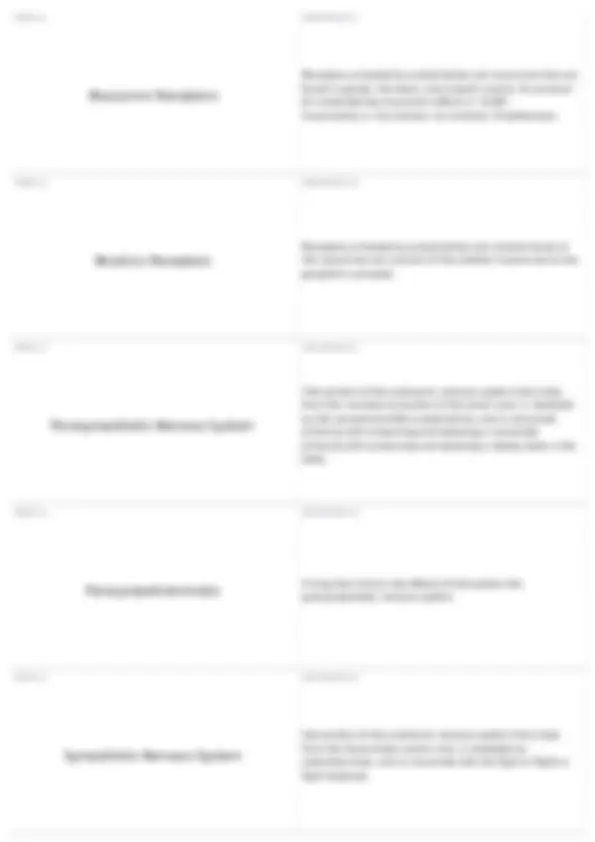
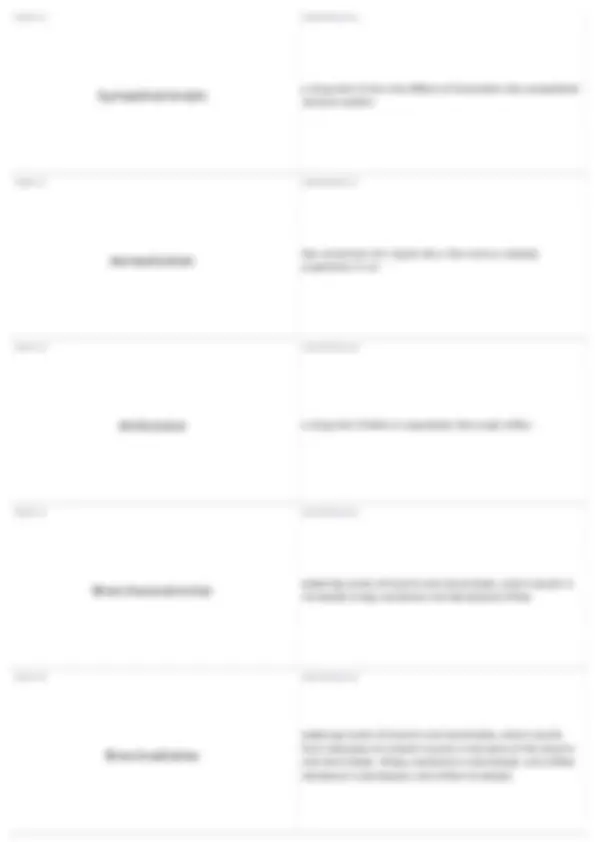
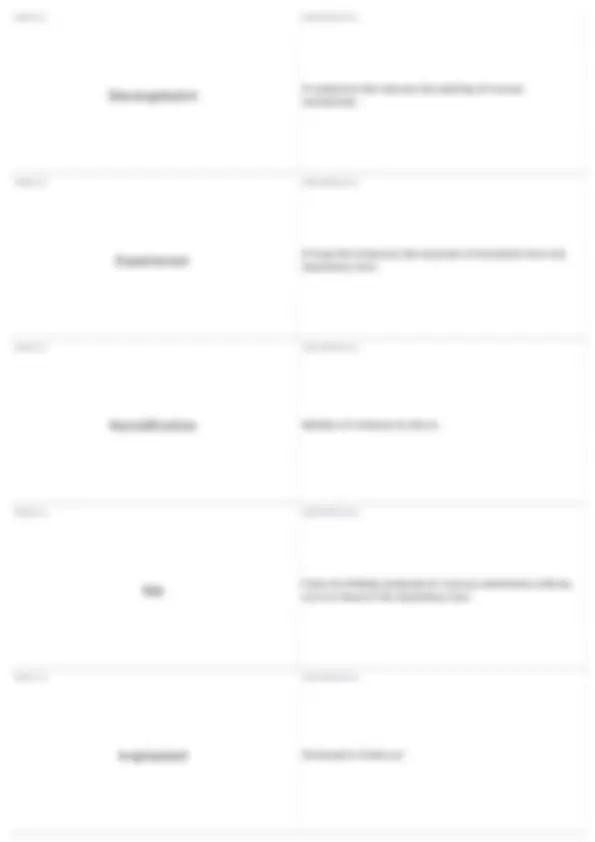
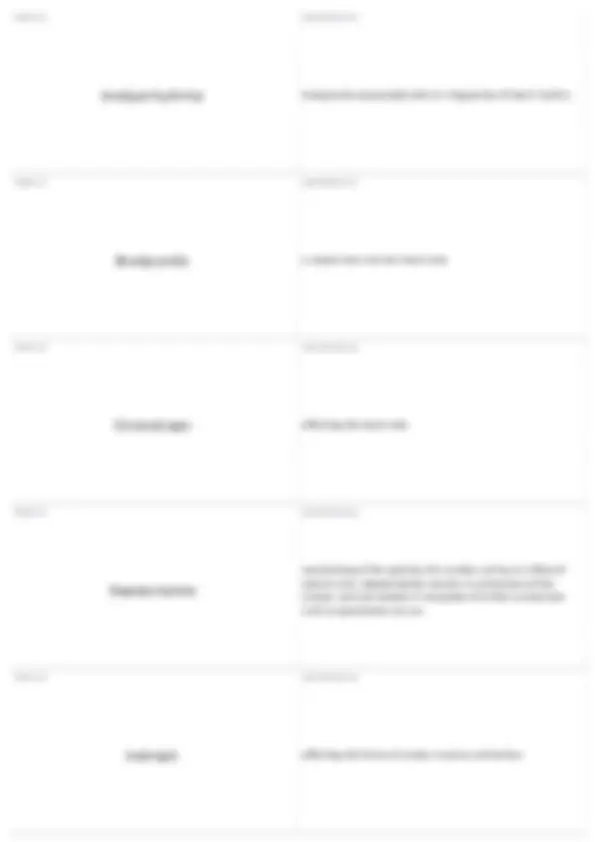
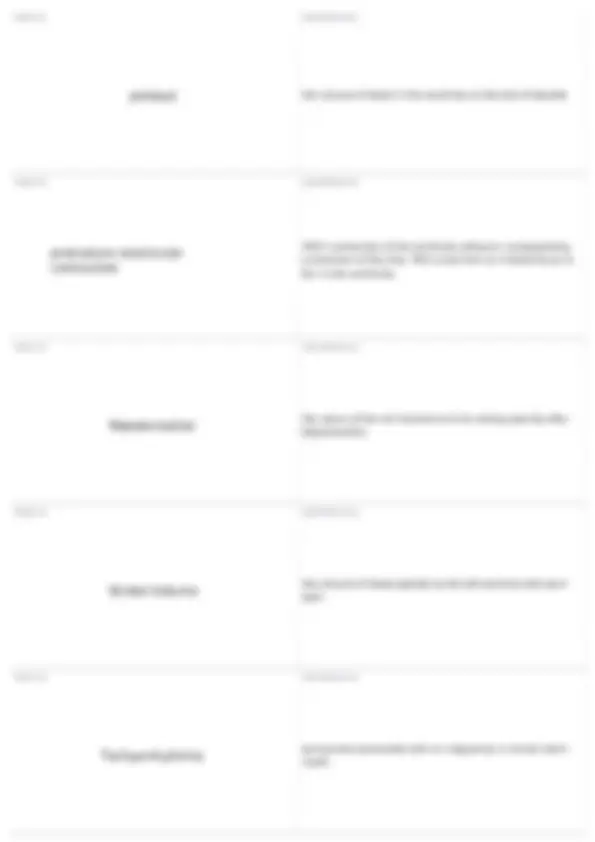
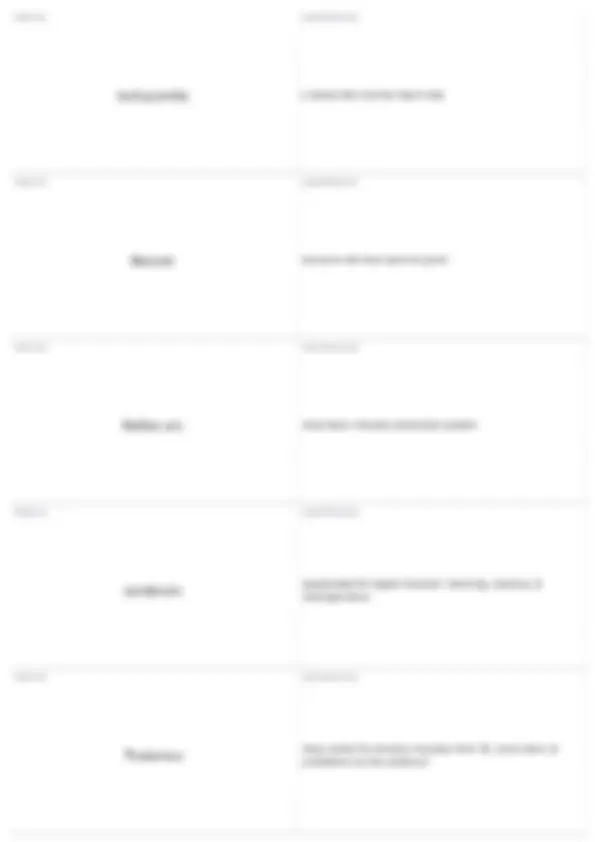
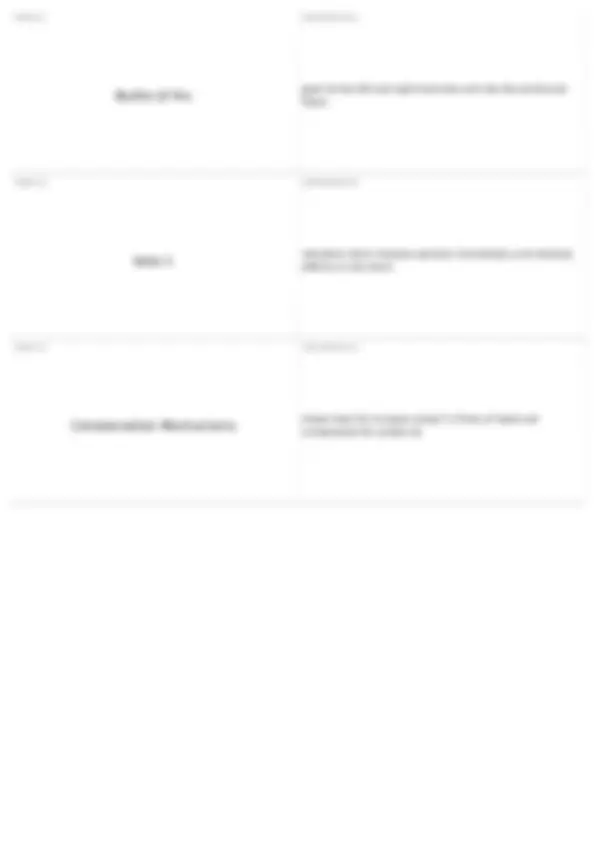


Study with the several resources on Docsity

Earn points by helping other students or get them with a premium plan


Prepare for your exams
Study with the several resources on Docsity

Earn points to download
Earn points by helping other students or get them with a premium plan
Community
Ask the community for help and clear up your study doubts
Discover the best universities in your country according to Docsity users
Free resources
Download our free guides on studying techniques, anxiety management strategies, and thesis advice from Docsity tutors
Class: VET 101 - Intro to Veterinary Techology; Subject: Veterinary Technology; University: Volunteer State Community College; Term: Fall 2012;
Typology: Quizzes
1 / 13

This page cannot be seen from the preview
Don't miss anything!








A neurotransmitter that allows a nerve impulse to cross the synaptic junction (gap) between two nerve fibers or between a nerve fiber and an organ ( e.g., muscle, gland) TERM 2
DEFINITION 2 An enzyme that brings about the breakdown of acetylcholine in the synaptic gap. TERM 3
DEFINITION 3 loss of pain sensation ( other sensation may be present). TERM 4
DEFINITION 4 the loss of all sensation. May be described as local ( affecting a small area), regional, or surgical (accompanied by unconsciousness). TERM 5
DEFINITION 5 That portion of the nervous system that controls involuntary activities.
A state of involuntary muscle rigidity that is accompanied by immobility, amnesia, and variable amounts of analgesia. Some reflexes may be preserved. TERM 7
DEFINITION 7 The class of neurotransmitters that includes dopamine, epinephrine, and norepinephrine. When given therapeutically, catecholamines mimic the effects of stimulating the sympathetic nervous system. TERM 8
DEFINITION 8 A term used to describe an action or receptor that is activated by acetylcholine. TERM 9
DEFINITION 9 A gland, organ , or tissue that responds to nerve stimulation with a specific action. TERM 10
DEFINITION 10 The site of the synapse be tween neuron one and neuron two of the autonomic nervous system.
a drug that mimics the effects of stimulation the sympathetic nervous system. TERM 17
DEFINITION 17 the conversion of a liquid into a fine mist or colloidal suspension in air. TERM 18
DEFINITION 18 a drug that inhibits or suppresses the cough reflex. TERM 19
DEFINITION 19 widening lumen of bronchi and bronchioles, which results in increased airway resistance and decreased airflow. TERM 20
DEFINITION 20 widening lumen of bronchi and bronchioles, which results from relaxation of smooth muscle in the walls of the bronchi and bronchioles. Airway resistance is decreased, and airflow resistance is decreased, and airflow increased.
A substance that reduces the swelling of mucous membranes. TERM 22
DEFINITION 22 A drug that enhances the expulsion of secretions from the respiratory tract. TERM 23
DEFINITION 23 Addition of moisture to the air. TERM 24
DEFINITION 24 Class of antibody produced on mucous membrane surfaces, such as those of the respiratory tract. TERM 25
DEFINITION 25 thickened or dried out
A mixture of phospholipids secreted by type II alveolar cells that reduce surface tension in pulmonary fluids. TERM 32
DEFINITION 32 sticky TERM 33
DEFINITION 33 the resistance (pressure) in arteries that must be overcome to empty blood from the ventricle. TERM 34
DEFINITION 34 A variation from the normal rhythm. TERM 35
DEFINITION 35 the ability of cardiac muscle to generate impulses.
bradycardia associated with an irregularity of heart rhythm. TERM 37
DEFINITION 37 a slower-than-normal heart rate. TERM 38
DEFINITION 38 affecting the heart rate TERM 39
DEFINITION 39 neutralizing of the polarity of a cardiac cell by an inflow of sodium ions. depolarization results in contraction of the cardiac cell and renders it incapable of further contraction until re polarization occurs. TERM 40
DEFINITION 40 affecting the force of cardiac muscle contraction.
a faster-than-normal heart rate. TERM 47
DEFINITION 47 transmit info from point to point TERM 48
DEFINITION 48 most basic impulse conduction system TERM 49
DEFINITION 49 responsible for higher function ( learning, memory, & interoperation) TERM 50
DEFINITION 50 relay center for sensory impulses form SC, brain stem, & cerebellum to the cerebrum
primary mediator between nervous system & endocrine system TERM 52
DEFINITION 52 carries both sensory & motor impulse between SC & brain also contains center that control vital physiologic activities. TERM 53
DEFINITION 53 network of nerve cells scattered through bundles of fibers begin in medulla & extend upward through the brain fxn to arouse the cerebral cortex & is responsible for consciousness, sleep, & wakefulness TERM 54
DEFINITION 54 warm and humidify air, hair to filter out large particles TERM 55
DEFINITION 55 cough, sneeze and reverse sneeze-respnse to stimuli on surfaces of air passages, forcefully expel foreign material
goes to the left and right branches and into the ventricular fibers TERM 62
DEFINITION 62 receptors which produce positive chronotropic and inotropic effects on the heart. TERM 63
DEFINITION 63 allows heart to increase output in times of need and compensate for cardiac dz